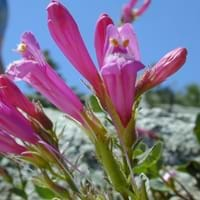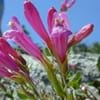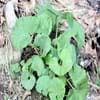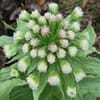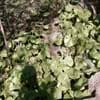Life Span
Perennial
Annual
Origin
Southwestern United States, Mexico
South America, Micronesia, New Zealand
Types
Not Available
Not Available
Habitat
Wild
coastal environs, Grassland, Roadsides, Waste areas, waterways
USDA Hardiness Zone
8-10
7-11
AHS Heat Zone
10-8
11 - 7
Sunset Zone
10, 11, 12, 13
H1, 3a, 3b, 4, 5, 6, 7, 8, 9, 10, 11, 12, 13, 14, 15, 16, 17, 18, 19, 20, 21, 22, 23, 24
Habit
Clump-Forming
Clump-Forming
Flower Color
Hot Pink
Purple
Flower Color Modifier
Bicolor
Bicolor
Fruit Color
Brown
Not Available
Leaf Color in Spring
Blue Green, Gray Green
Green, Light Green, Dark Green
Leaf Color in Summer
Blue Green, Gray Green
Light Green
Leaf Color in Fall
Blue Green, Gray Green
Green, Light Green, Dark Green
Leaf Color in Winter
Not Available
Dark Green, Tan
Leaf Shape
Lance shaped
Grass like
Plant Season
Spring, Winter
Spring, Summer, Fall, Winter
Sunlight
Full Sun
Full Sun
The pH of Soil
Neutral, Alkaline
Acidic, Neutral
Soil Drainage
Well drained
Well drained
Bloom Time
Early Spring, Spring, Late Spring, Late Winter
Summer, Fall
Tolerances
Not Available
Drought, Salt
Where to Plant?
Container, Ground
Ground
How to Plant?
Seedlings
Seedlings
Plant Maintenance
Medium
Medium
Watering Requirements
occasional watering once established
Average Water Needs
In Summer
Lots of watering
Lots of watering
In Spring
Moderate
Moderate
In Winter
Average Water
Average Water
Soil pH
Neutral, Alkaline
Acidic, Neutral
Soil Drainage Capacity
Well drained
Well drained
Sun Exposure
Full Sun
Full Sun
Pruning
Remove damaged leaves, Remove dead branches, Remove dead leaves
Remove damaged leaves, Remove dead branches, Remove dead leaves
Fertilizers
All-Purpose Liquid Fertilizer
All-Purpose Liquid Fertilizer
Pests and Diseases
Red blotch
Red blotch
Plant Tolerance
Drought
Drought
Flower Petal Number
Single
Single
Foliage Texture
Medium
Fine
Foliage Sheen
Matte
Matte
Attracts
Hummingbirds
Not Available
Allergy
poisonous if ingested
Itchiness
Aesthetic Uses
Borders, Showy Purposes
Showy Purposes
Beauty Benefits
Not Available
Not Available
Environmental Uses
Air purification
Air purification
Medicinal Uses
constipation, Stomach pain, Swelling, Wounds
Not Available
Part of Plant Used
Flowers, Leaves, Stem
Flowers, Leaves
Other Uses
Showy Purposes, Used as Ornamental plant
Animal Feed, Used as Ornamental plant
Used As Indoor Plant
Yes
No
Used As Outdoor Plant
Yes
Yes
Garden Design
Cutflower, Mixed Border, Rock Garden / Wall, Wildflower
Cutflower, Dried Flower/Everlasting, Feature Plant, Foundation, Groundcover, Mixed Border, Screening / Wind Break
Botanical Name
PENSTEMON parryi
CORTADERIA jubata
Common Name
Parry's Beardtongue
Purple Pampas Grass
In Hindi
penstemon parryi
Purple pampas grass
In German
penstemon parryi
Lila Pampasgras
In French
penstemon parryi
Pourpre herbe de pampa
In Spanish
parryi penstemon
hierba púrpura pampas
In Greek
penstemon parryi
Μωβ γρασίδι παμπάς
In Portuguese
parryi penstemon
grama roxa pampas
In Polish
penstemon parryi
Purpurowy trawa pampasów
In Latin
Persicaria californicum
Purpura Pampas herba
Phylum
Magnoliophyta
Magnoliophyta
Class
Magnoliopsida
Liliopsida
Family
Scrophulariaceae
Poaceae
Genus
Penstemon
Cortaderia
Clade
Angiosperms, Asterids, Eudicots
Angiosperms, Commelinids, Monocots
Tribe
Not Available
Not Available
Subfamily
Not Available
Not Available
Number of Species
Not Available
Not Available
Difference Between Penstemon Parryi and Purple Pampas Grass
If you are confused whether Penstemon Parryi or Purple Pampas Grass are same, here are some features about those plants to help you choose better. Many people think that these two plants have the same characteristics, but one can see Penstemon Parryi and Purple Pampas Grass Information and learn more about it. Fertilizers required for proper growth of Penstemon Parryi are All-Purpose Liquid Fertilizer, whereas for Purple Pampas Grass fertilizers required are All-Purpose Liquid Fertilizer. Hence, one should know the basic difference between Penstemon Parryi and Purple Pampas Grass if you are planning to have them in your garden to enhance its beauty.
<
Flowering PlantsImportance of Penstemon Parryi and Purple Pampas Grass
Want to have the most appropriate plant for your garden? You might want to know the importance of Penstemon Parryi and Purple Pampas Grass. Basically, these two plants vary in many aspects. Compare Penstemon Parryi and Purple Pampas Grass as they differ in many characteristics such as their life, care, benefits, facts, etc. Every gardener must at least have the slightest clue about the plants he wants to plant in his garden. Compare their benefits, which differ in many ways like facts and uses. The medicinal use of Penstemon Parryi is constipation, Stomach pain, Swelling and Wounds whereas of Purple Pampas Grass is Not Available. Penstemon Parryi has beauty benefits as follows: Not Available while Purple Pampas Grass has beauty benefits as follows: Not Available.
Compare Facts of Penstemon Parryi vs Purple Pampas Grass
How to choose the best garden plant for your garden depending upon its facts? Here garden plant comparison will help you to solve this query. Compare the facts of Penstemon Parryi vs Purple Pampas Grass and know which one to choose. As garden plants have benefits and other uses, allergy is also a major drawback of plants for some people. Allergic reactions of Penstemon Parryi are poisonous if ingested whereas of Purple Pampas Grass have Itchiness respectively. Having a fruit bearing plant in your garden can be a plus point of your garden. Penstemon Parryi has no showy fruits and Purple Pampas Grass has showy fruits. Also Penstemon Parryi is not flowering and Purple Pampas Grass is not flowering . You can compare Penstemon Parryi and Purple Pampas Grass facts and facts of other plants too.
